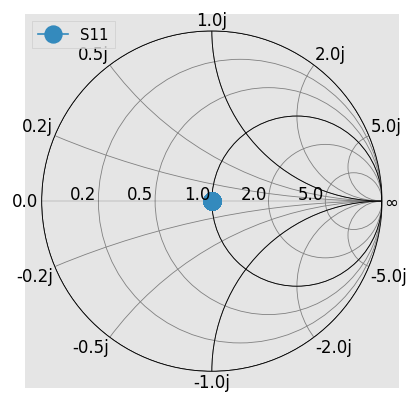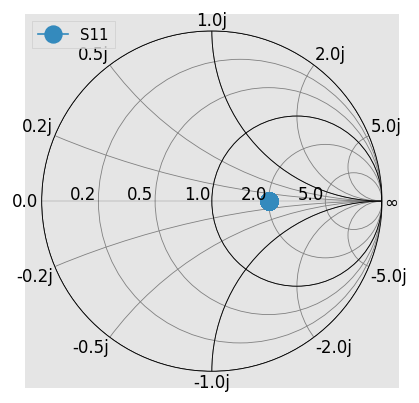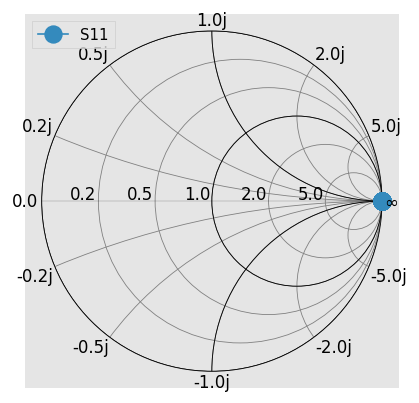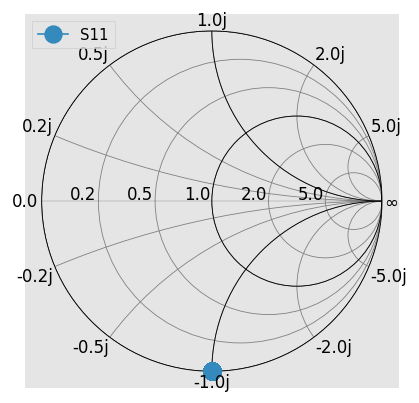Renormalizing S-parameters
This example demonstrates how to use skrf to renormalize a Network’s s-parameters to new port impedances. Although trivial, this example creates a matched load in 50ohms and then re-normalizes to a 25ohm environment, producing a reflection coefficient of 1/3.
Ok lets do it
[1]:
import skrf as rf
%matplotlib inline
from pylab import *
rf.stylely()
# this is just for plotting junk
kw = dict(draw_labels=True, marker = 'o', markersize = 10)
Create a one-port ideal match Network, (using the premade media class wr10 as a dummy)
[2]:
match_at_50 = rf.wr10.match()
Note that the z0 for this Network defaults to a constant 50ohm
[3]:
match_at_50
[3]:
1-Port Network: '', 75.0-110.0 GHz, 1001 pts, z0=[50.+0.j]
Plotting its reflection coefficient on the smith chart, shows its a match
[4]:
match_at_50.plot_s_smith(**kw)

Now, renormalize the port impedance from 50 -> 25, thus the previous 50ohm load now produces a reflection coefficient of
Plotting the renormalized response on the Smith Chart
[5]:
match_at_50.renormalize(25)
match_at_50.plot_s_smith(**kw)

Complex Impedances
You could also renormalize to a complex port impedance if you’re crazy. For example, renormalizing to 50j, one would expect:
However, one finds an unexpected result when plotting the Smith chart:
[6]:
match_at_50 = rf.wr10.match()
match_at_50.renormalize(50j) # same as renormalize(50j, s_def='power')
match_at_50.plot_s_smith(**kw) # expect -1j

This is because the default behaviour of scikit-rf is to use power-waves scattering parameter definition (since it is the most popular one is CAD softwares). But the power-waves definition is known to fail in such a case. This is why scikit-rf also implement the pseudo-waves scattering parameters definition, but you have to specify it using the s_def parameter:
[7]:
match_at_50 = rf.wr10.match()
match_at_50.renormalize(50j, s_def='pseudo')
match_at_50.plot_s_smith(**kw) # expect -1j

Which gives the expected result.